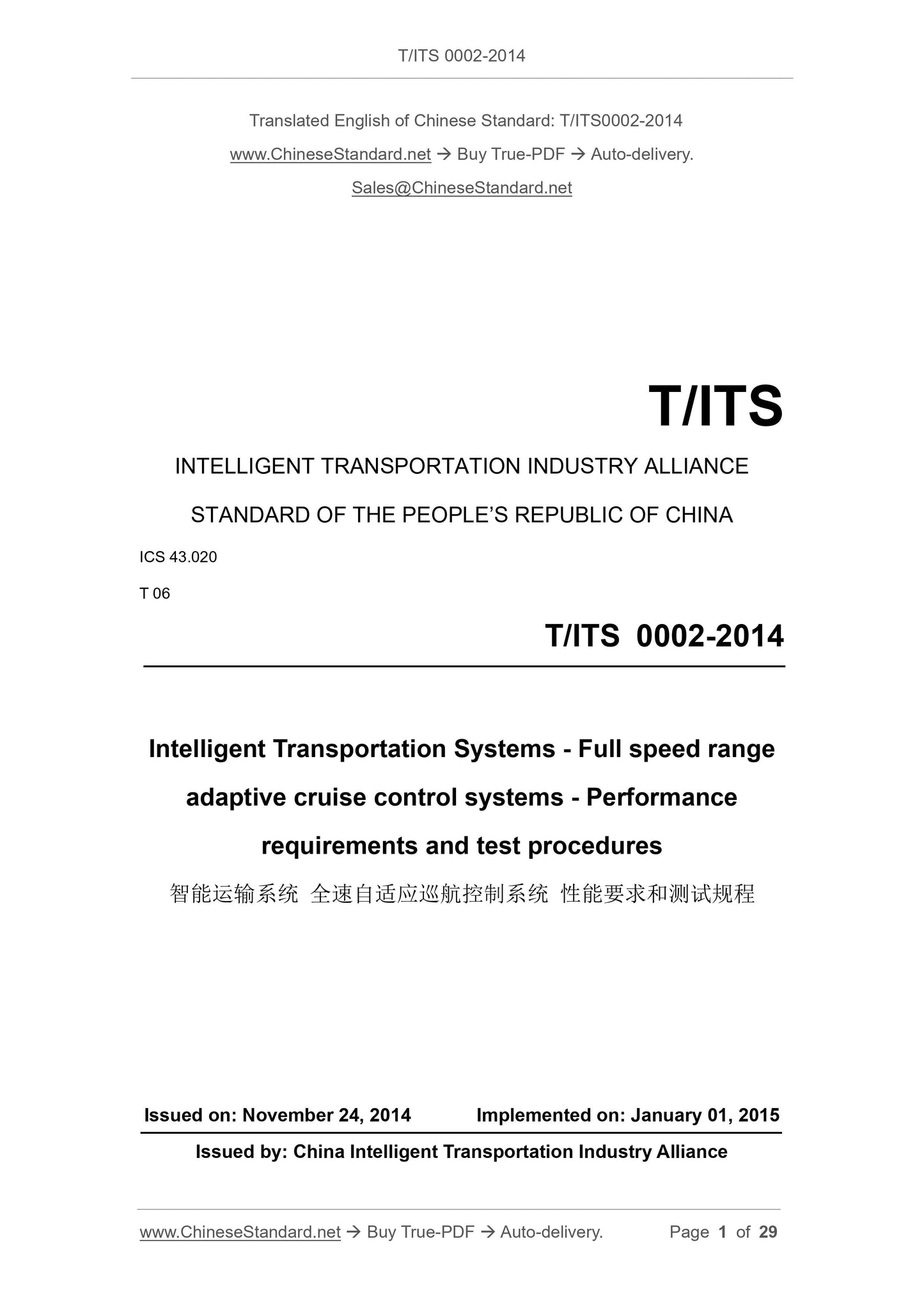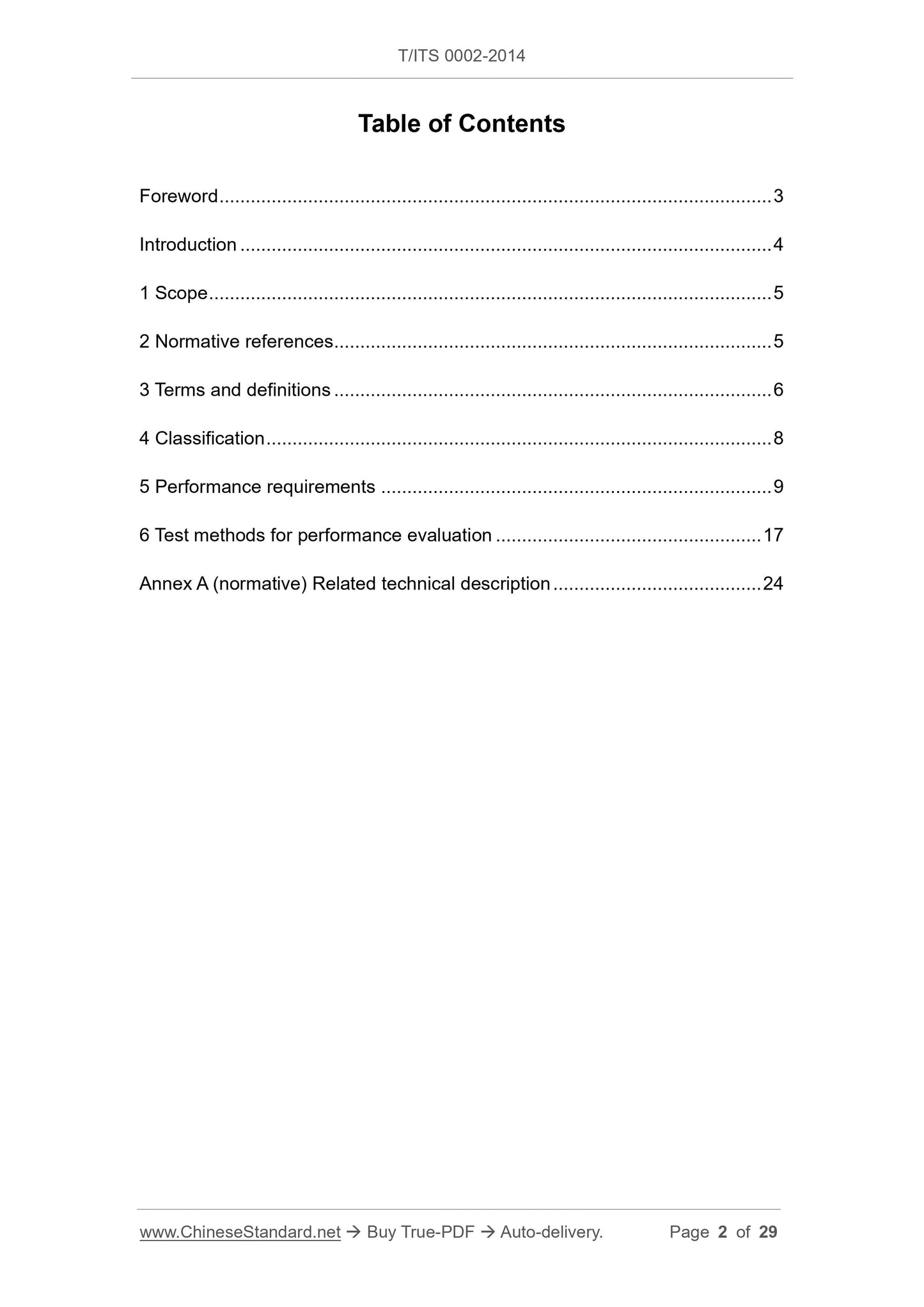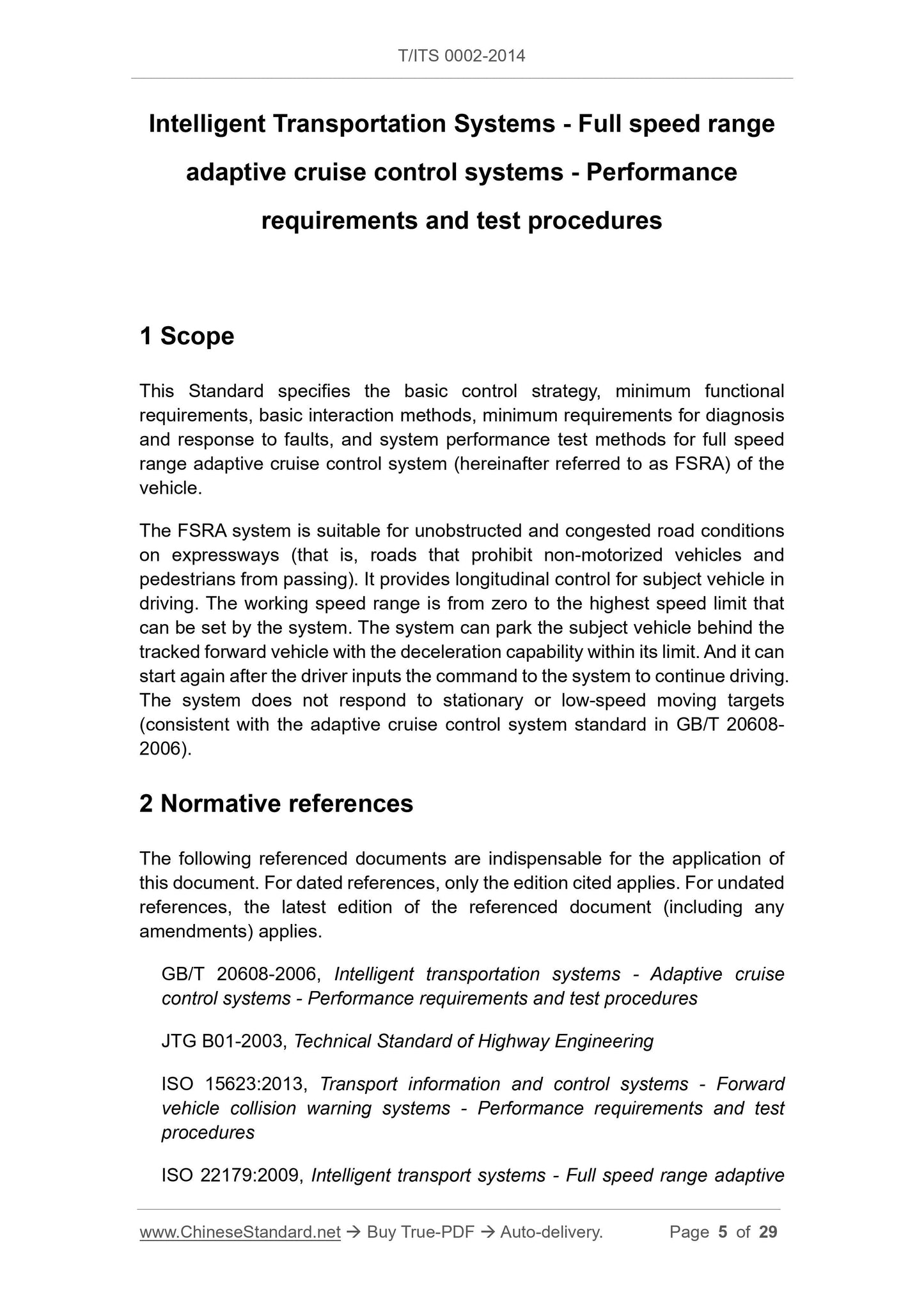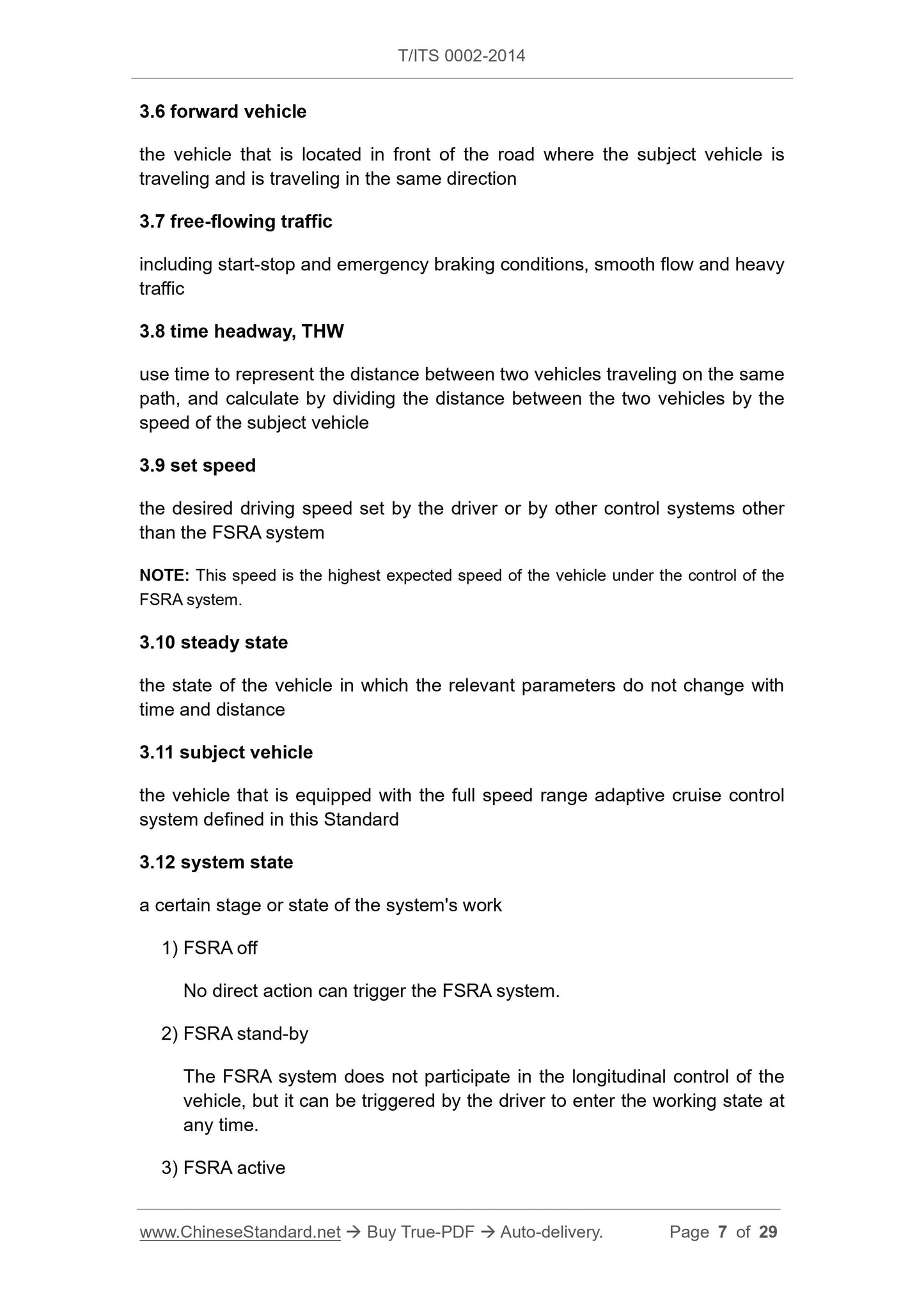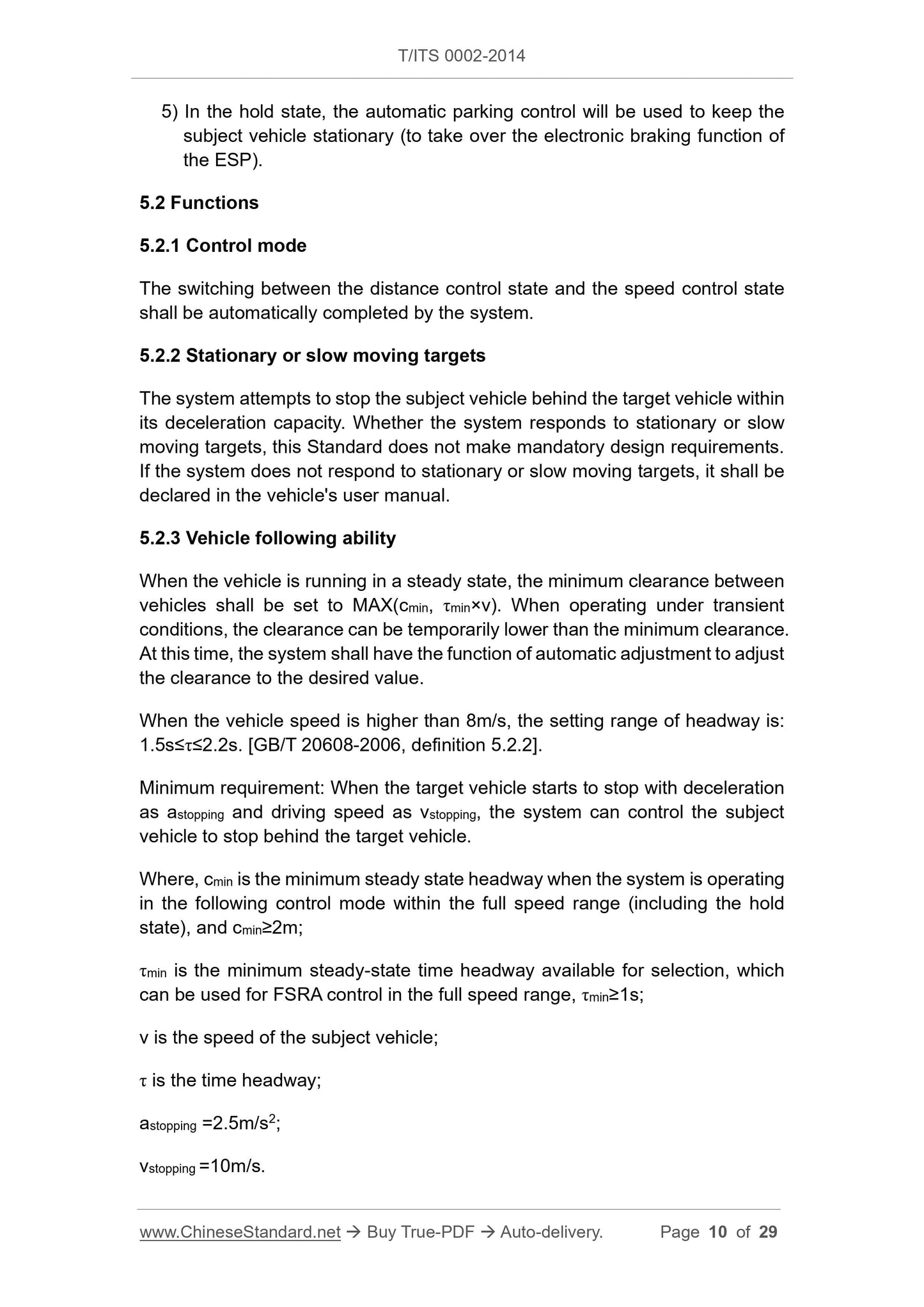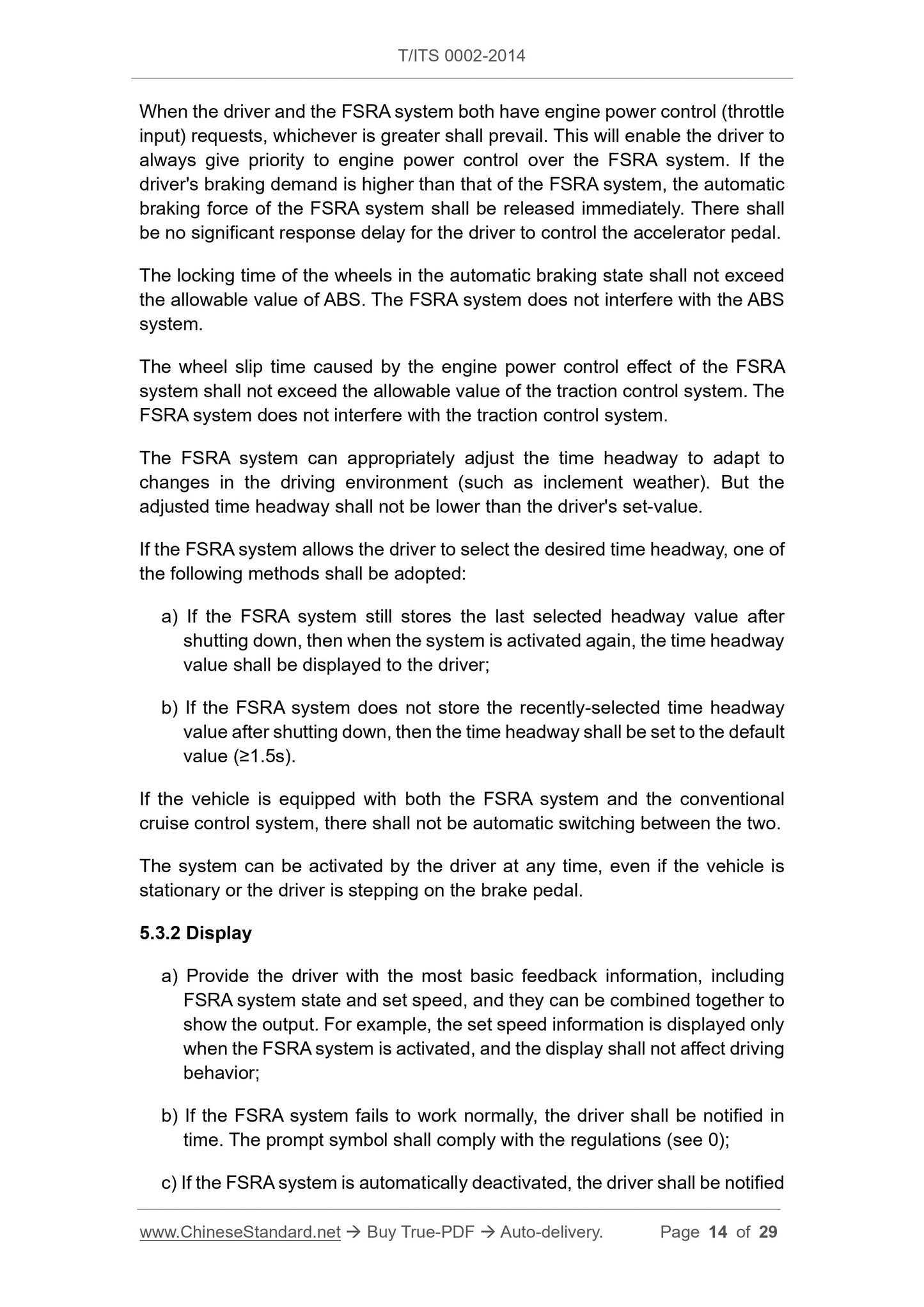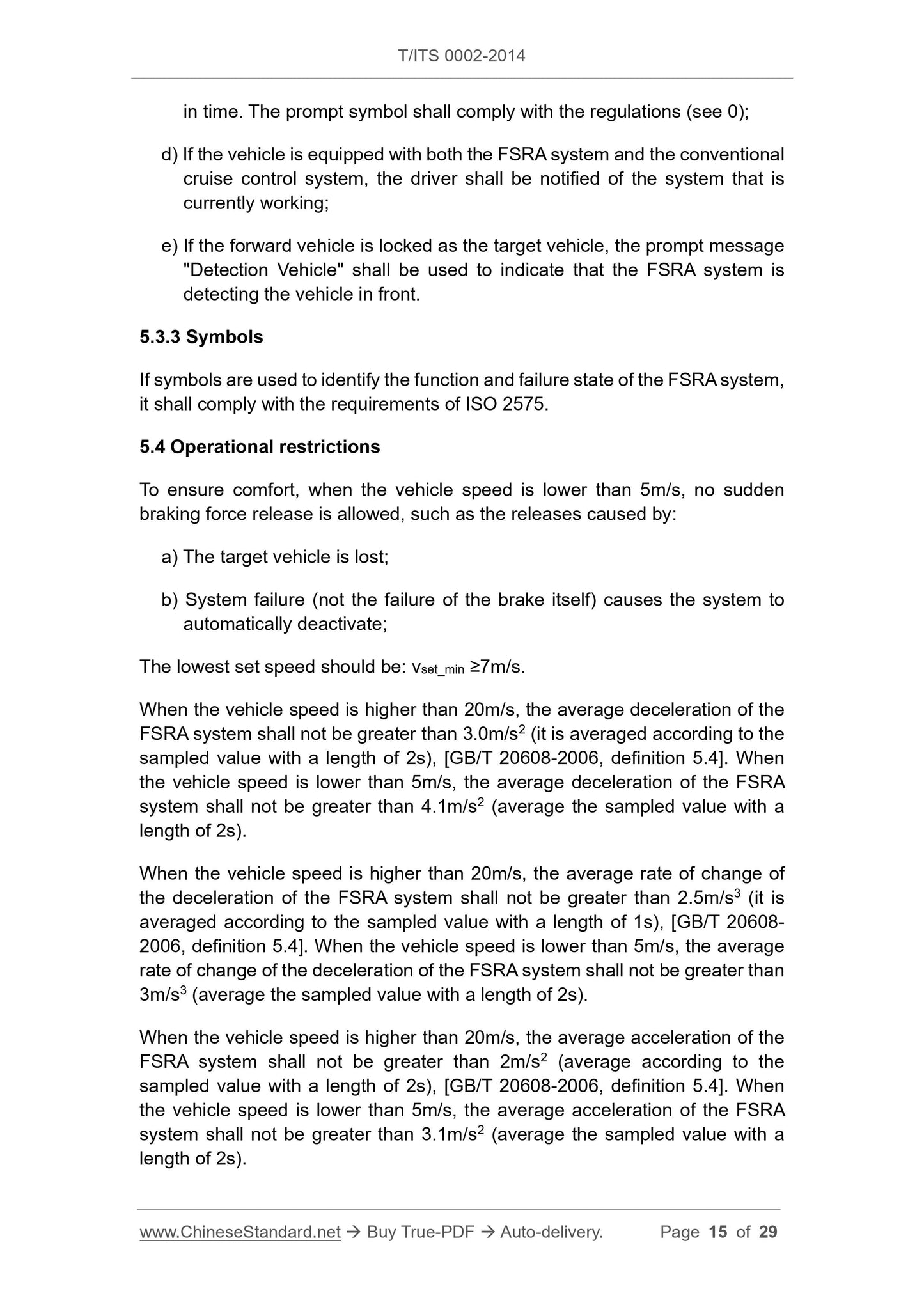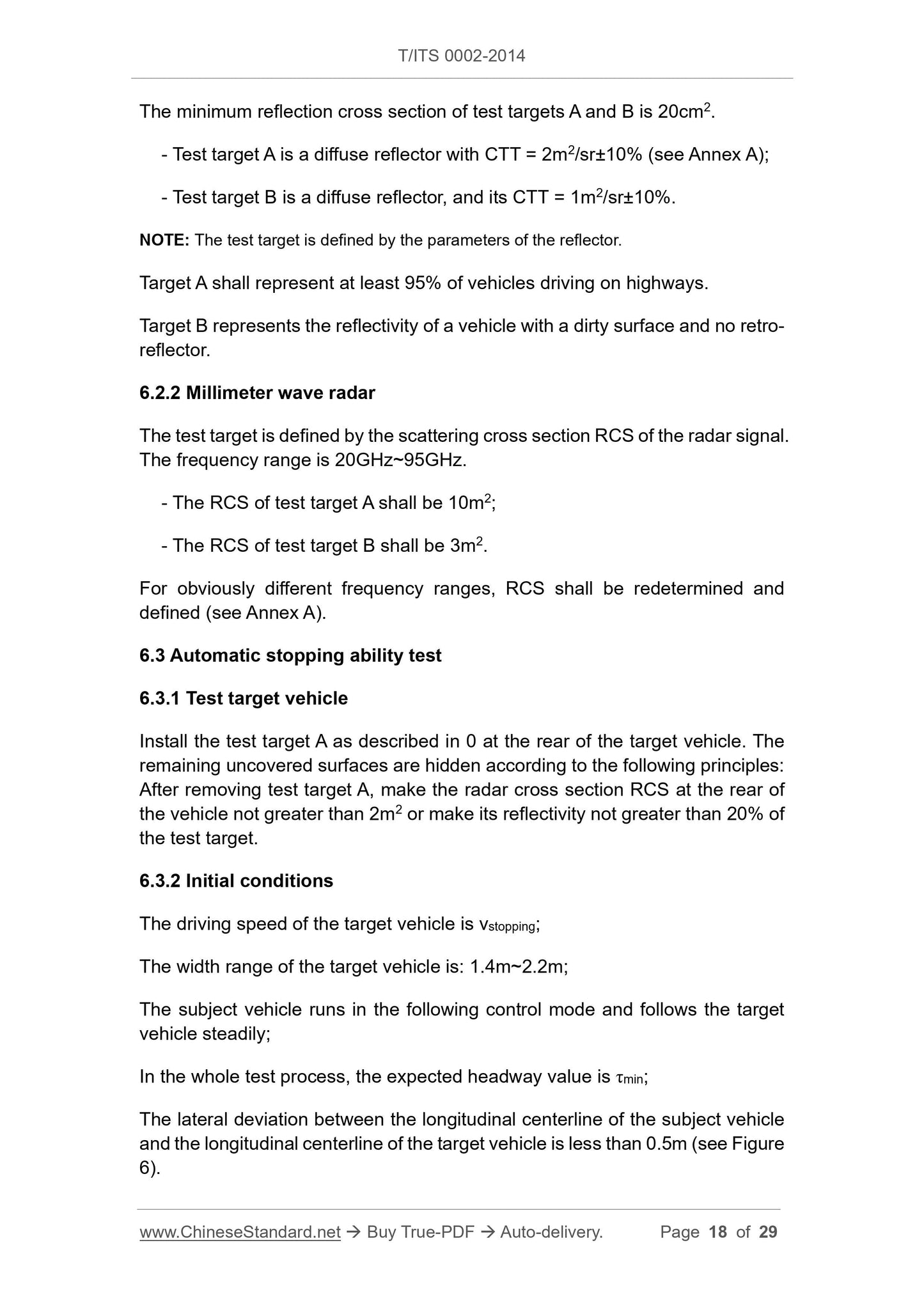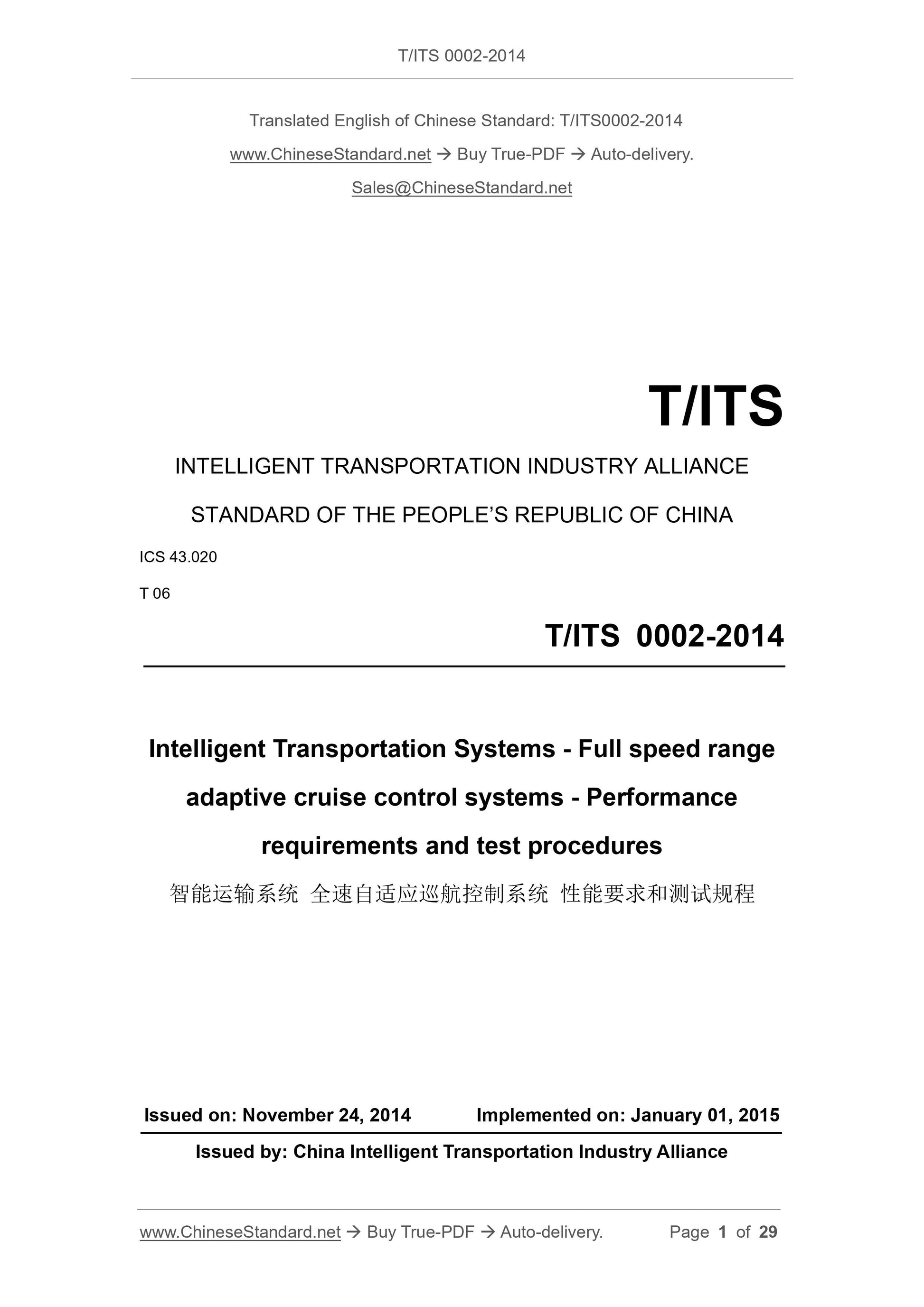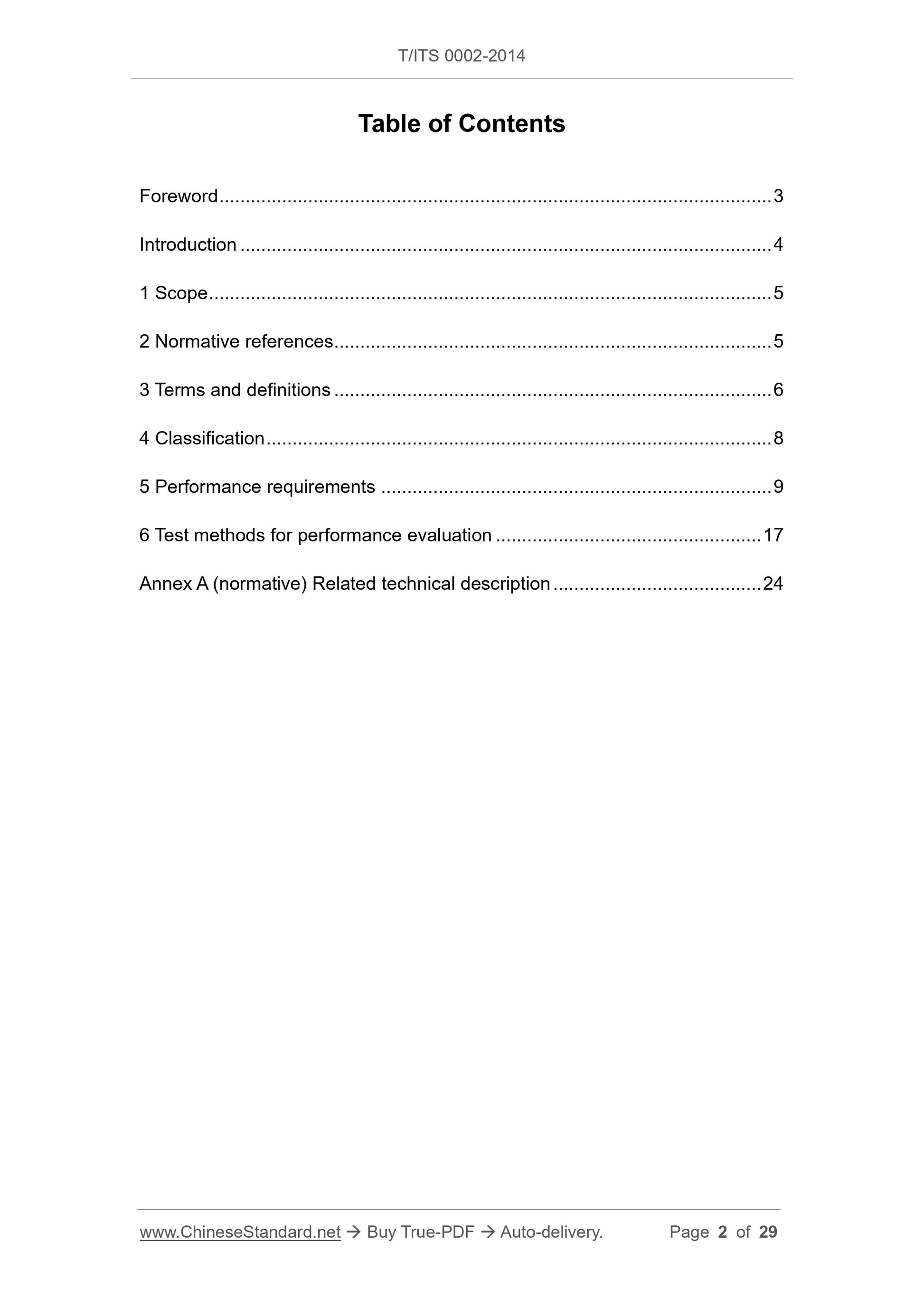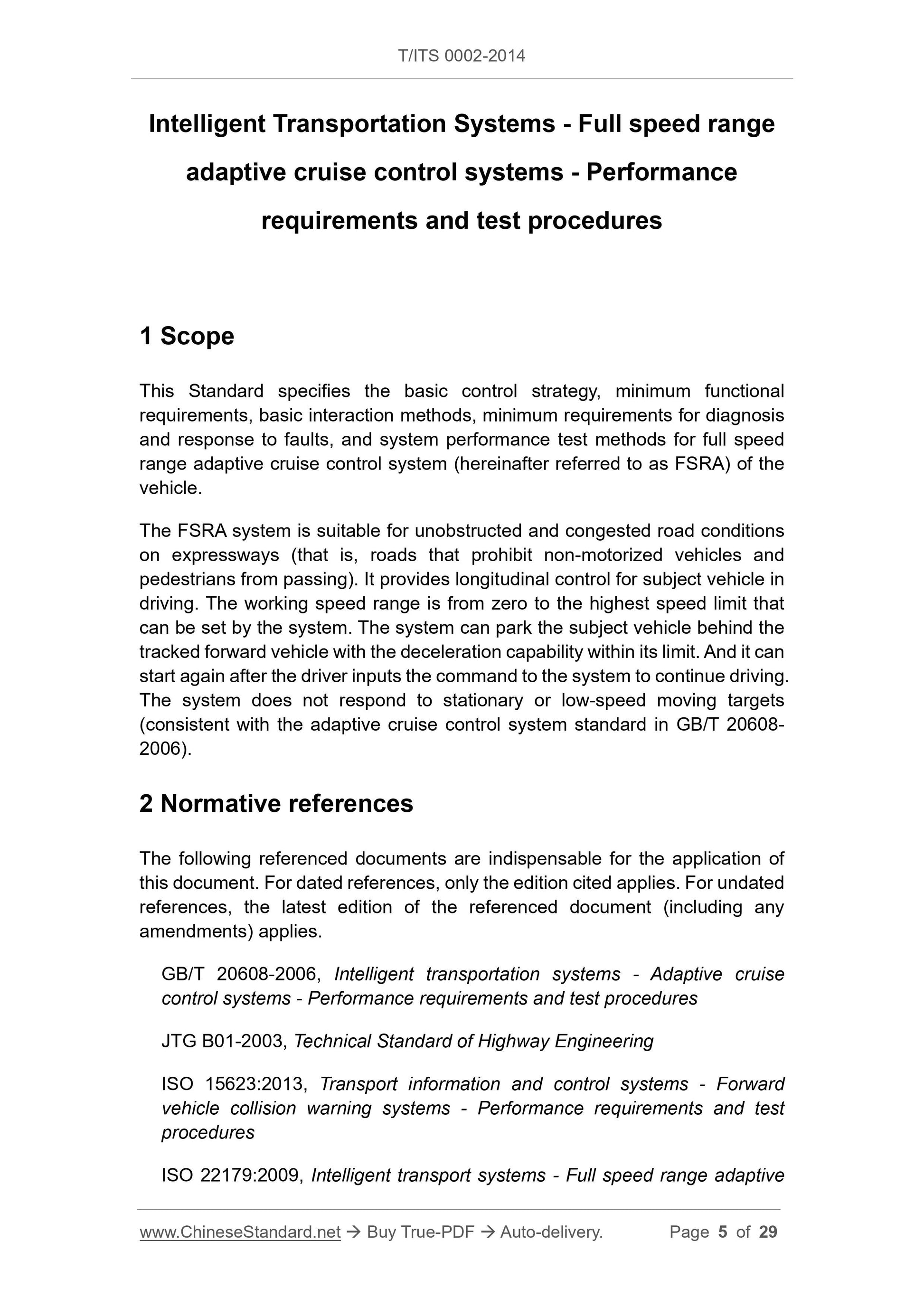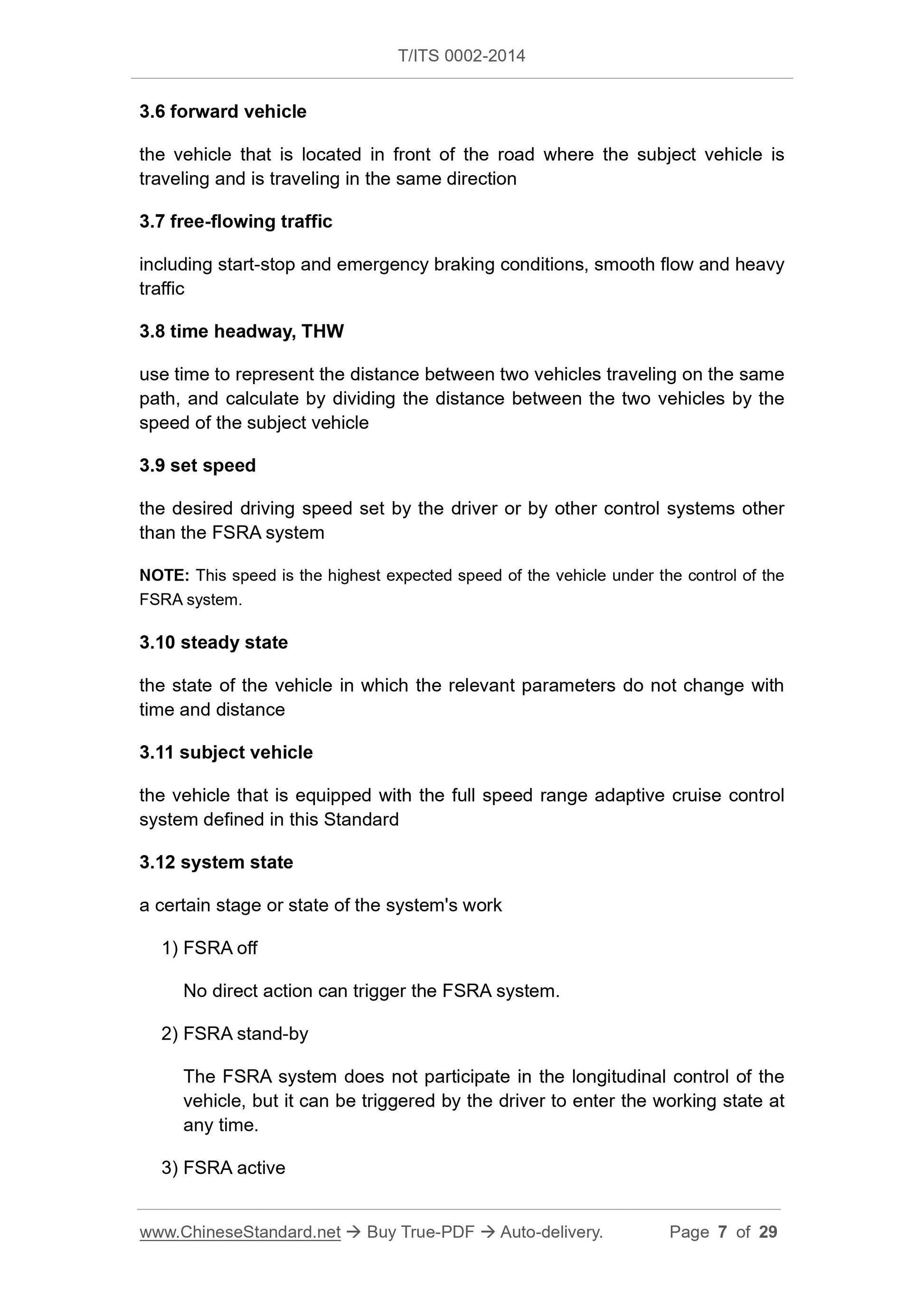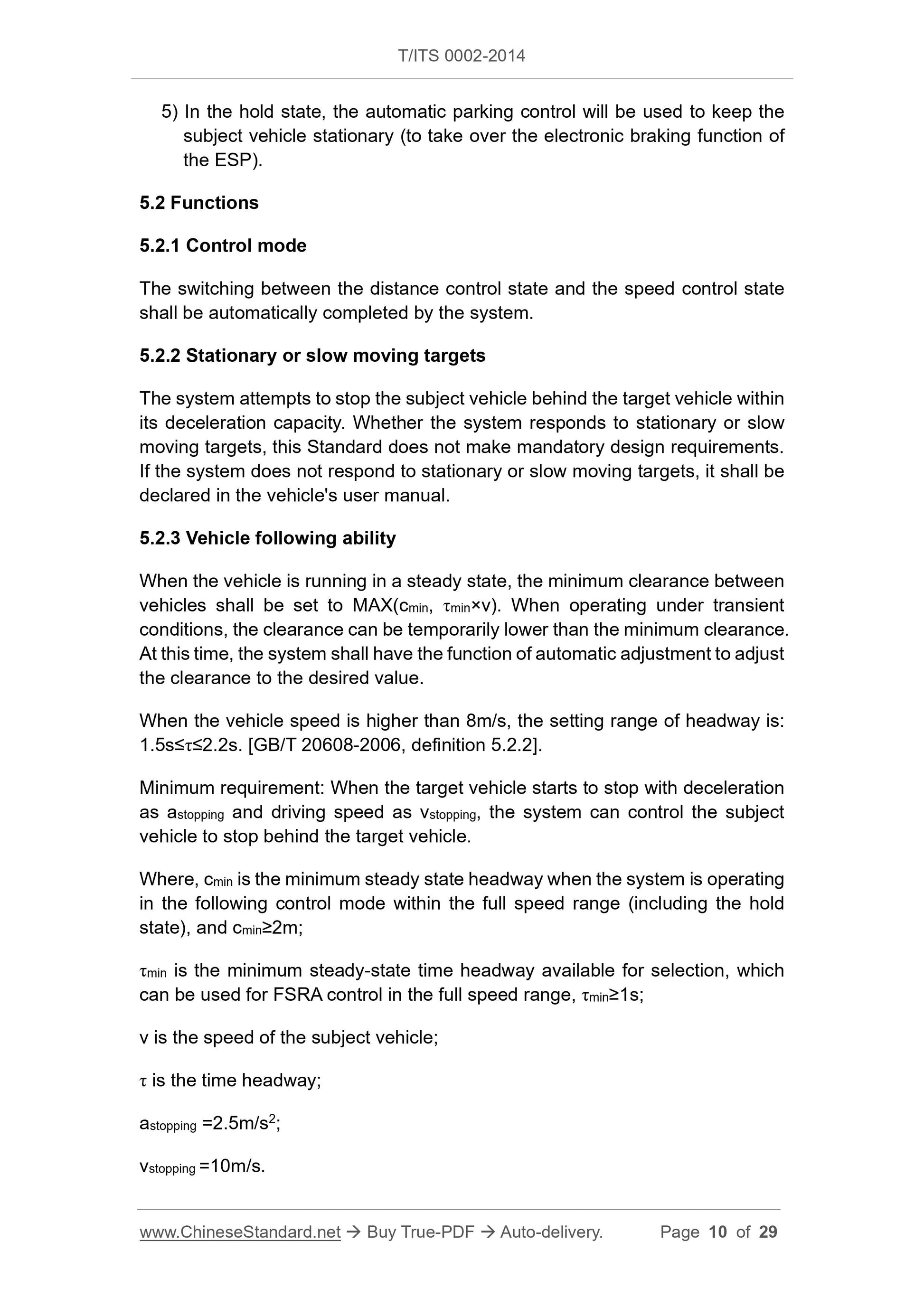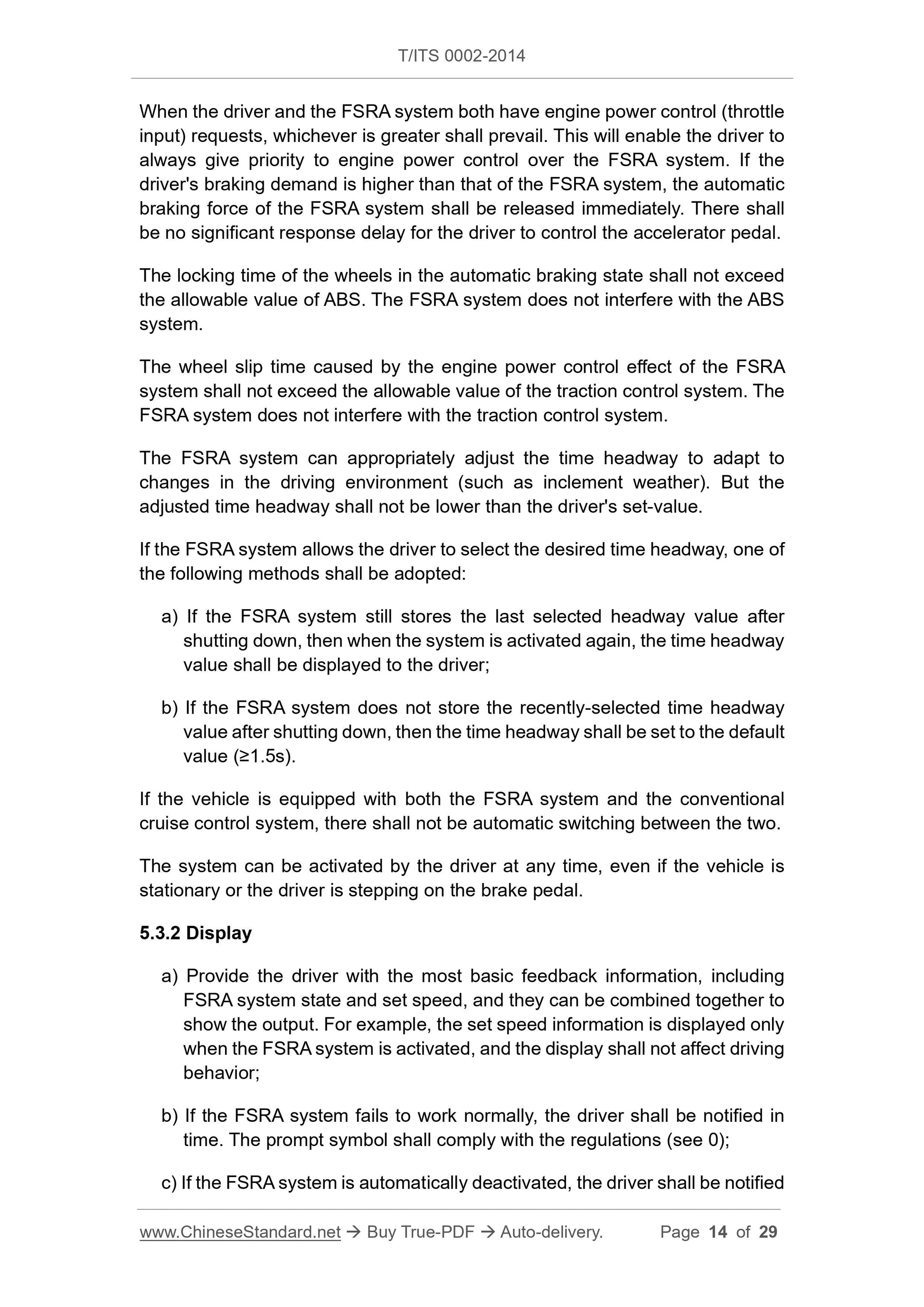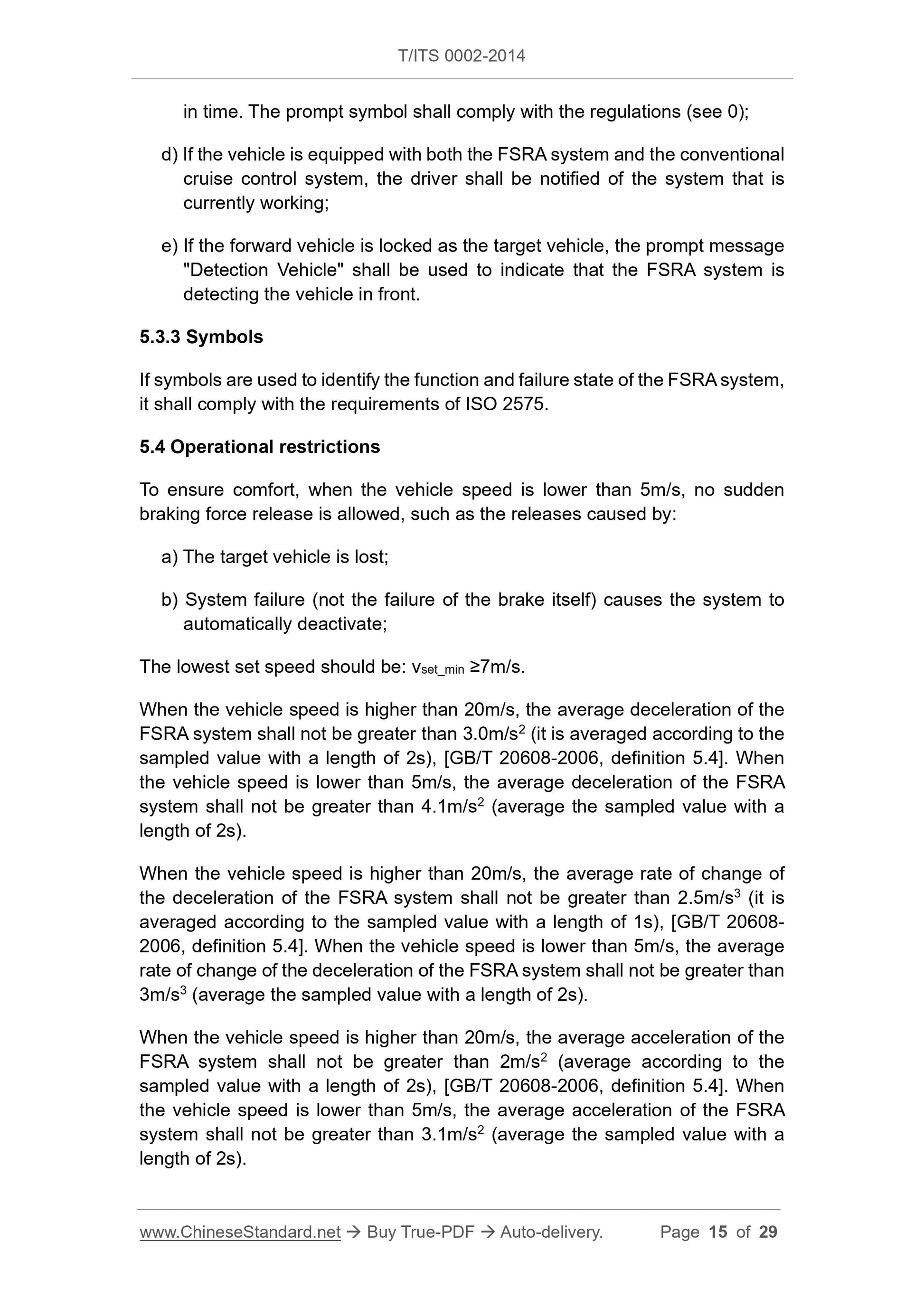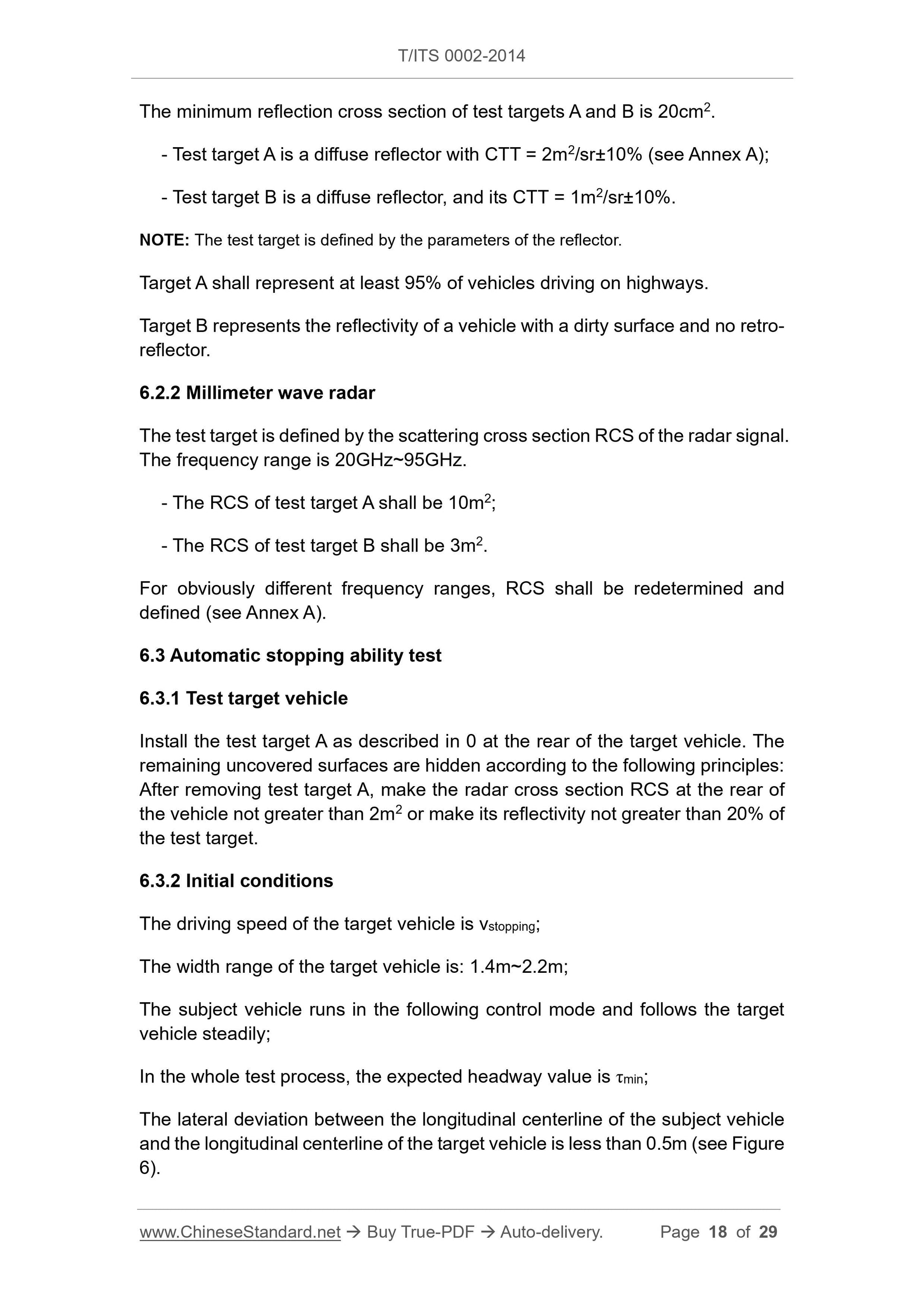1
/
of
8
www.ChineseStandard.us -- Field Test Asia Pte. Ltd.
TITS0002-2014 English PDF
TITS0002-2014 English PDF
Regular price
$590.00
Regular price
Sale price
$590.00
Unit price
/
per
Shipping calculated at checkout.
Couldn't load pickup availability
TITS0002-2014: Intelligent Transportation Systems -- Full speed range adaptive-cruise control systems -- Performance requirements and test-procedures
Delivery: 9 seconds. Download (and Email) true-PDF + Invoice.Get Quotation: Click TITS0002-2014 (Self-service in 1-minute)
Newer / historical versions: TITS0002-2014
Preview True-PDF
Scope
This Standard specifies the basic control strategy, minimum functionalrequirements, basic interaction methods, minimum requirements for diagnosis
and response to faults, and system performance test methods for full speed
range adaptive cruise control system (hereinafter referred to as FSRA) of the
vehicle.
The FSRA system is suitable for unobstructed and congested road conditions
on expressways (that is, roads that prohibit non-motorized vehicles and
pedestrians from passing). It provides longitudinal control for subject vehicle in
driving. The working speed range is from zero to the highest speed limit that
can be set by the system. The system can park the subject vehicle behind the
tracked forward vehicle with the deceleration capability within its limit. And it can
start again after the driver inputs the command to the system to continue driving.
The system does not respond to stationary or low-speed moving targets
(consistent with the adaptive cruise control system standard in GB/T 20608-
2006).
Share
